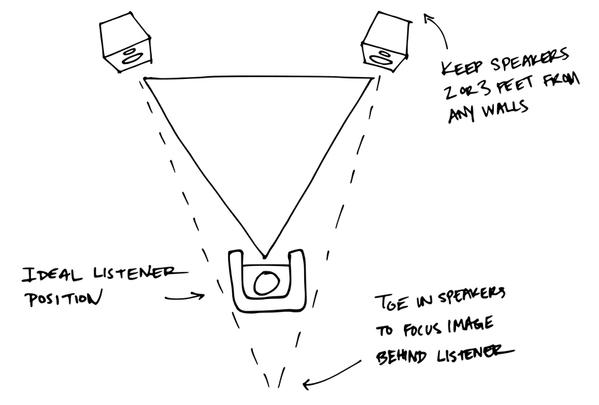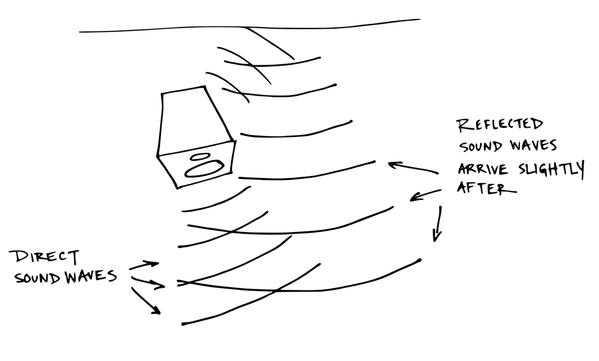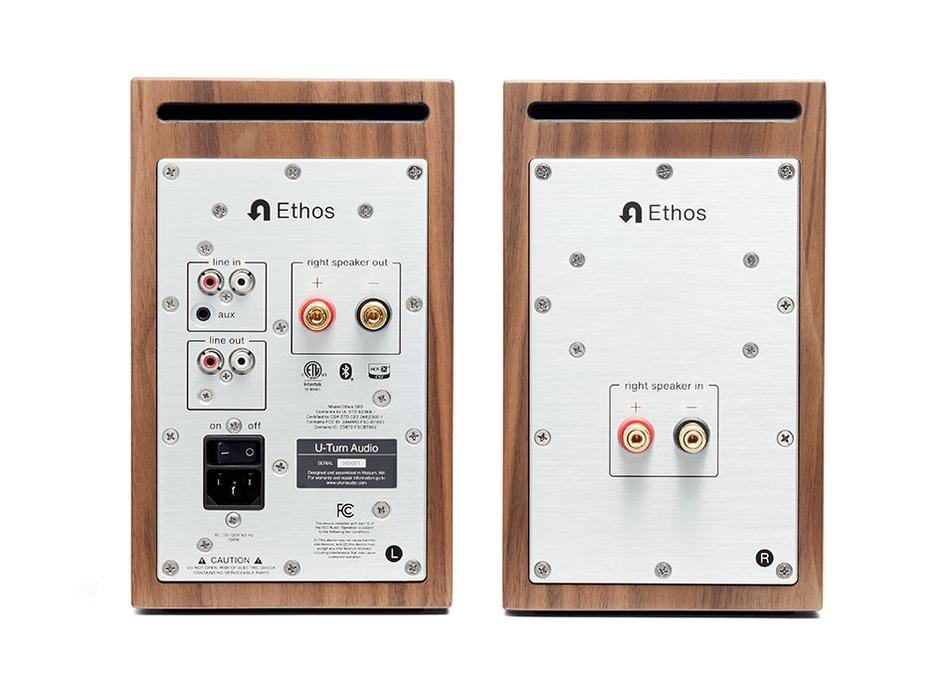How to position your speakers for great sound
Location, location, location. No matter what audio equipment you have, proper speaker placement can significantly improve your listening experience. Here are 7 quick tips to help you get the most out of your stereo speakers:

- Initial placement. Decide roughly where you will be positioned when listening, then place your speakers so that they form an equilateral triangle with your listening position.
- Speaker separation. Try to get about 4 feet of separation for bookshelf speakers or 8 feet for floorstanding speakers. If your speakers are too close, sounds will blend together and become muddy. If they are too far apart, there will be a gap between the two halves of the stereo image (more on this later).
- Speaker height. Position your speakers so that the tweeters are at roughly the same height as your ears. (Tweeters are the small drivers on your speakers. They are responsible for handling the high-frequency treble range.)
- Wall proximity. Move your speakers at least 2-3 feet away from the nearest wall. This will minimize sound reflections, which can negatively impact playback clarity.
- Adjust speaker angle (toe-in). Angle your speakers inward so they're pointed towards the listener - more specifically, at a point directly behind the listener's head. If you want good sound across a wider listening area, then decrease toe-in. Increase or decrease the angle of your speakers a few degrees at a time until you hit that sweet spot!
- Room arrangement. Make sure no objects stand between your speakers and your ears. Strive for symmetry in speaker and furniture arrangement. The goal here is to minimize sound reflections as much as possible.
- Isolate your turntable. Your turntable should always be isolated from speaker vibrations. It's best practice to keep your turntable on a different surface than your speakers (though some desktop speaker stands let you cheat on this a bit).
Achieving great sound with your speakers involves some trial-and-error. If you make an adjustment and notice that a song's parts have suddenly "locked" into place, then you've probably found your sweet spot.
Why do these steps matter? It all comes down to controlling stereo imaging and sound reflections.
Imaging
Accurate stereo imaging gives the impression that each sound is coming from a different place. Imagine the sound of an entire band coming from a single point in space, with each instrument stacked on top of each other. This would be a poor stereo image. Now imagine unpacking those sounds so that each instrument is spread out from left to right - as if the musicians were standing on a stage in front of you. This is a good stereo image.

Next time you're listening to your speakers, ask yourself a couple of questions:
1. Is there an empty space in the middle of the sound?
2. Do the instruments seem to overlap and blend together?
If you answered yes to either of these, then there’s a good chance you can improve the stereo image by adjusting the toe-in or location of your speakers.
Reflections
When you listen to music, you are hearing more than just the sound waves that travel directly from the speakers to your ears. You are also hearing reflected sound that bounce off your walls, furniture, cats, etc. Reflected sound waves will reach your ears slightly later than direct waves, which results in a type of distortion called “time smearing.” This can make your music sound muddy and unclear, and can also destroy your delicate stereo image.

Do I need speaker stands?
Once you’ve figured out the best place to put your speakers, consider their height. Both speakers should face toward the listener, with the tweeters at roughly ear level. To achieve optimal listening height, we generally suggest using speaker stands. But placing your speakers on furniture instead of dedicated stands is usually fine - just keep the reflection principle in mind and make sure that the speaker cones are flush with (or protruding from) the front edge of the furniture. If your speaker is near the back of a shelf, sound will reflect from any and all surfaces in front of the cone.
Bouncing off the walls
Remember that walls reflect sound, too. Speakers should be at least 2-3 feet away from the nearest wall (especially if your speaker is in a corner). Many speakers have rear-facing bass ports. Positioning a rear bass port too close to the wall will reflect sound waves, resulting in time smearing. If your speakers have front-facing bass ports, then you should be able to get away with having them a little closer to the wall.

Do your speakers have rear-facing bass port like our Ethos Powered Speakers do? Speakers with rear-facing port should be slightly distanced from nearby walls to prevent reflection.